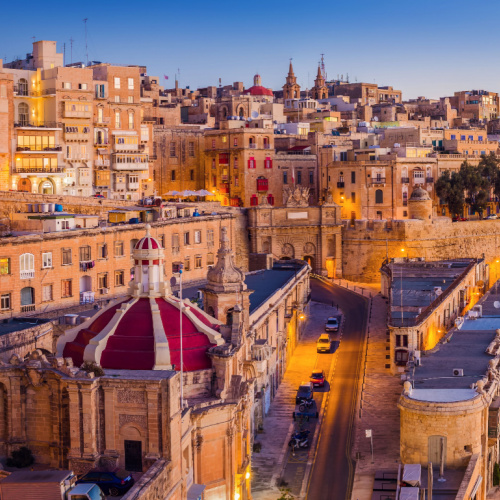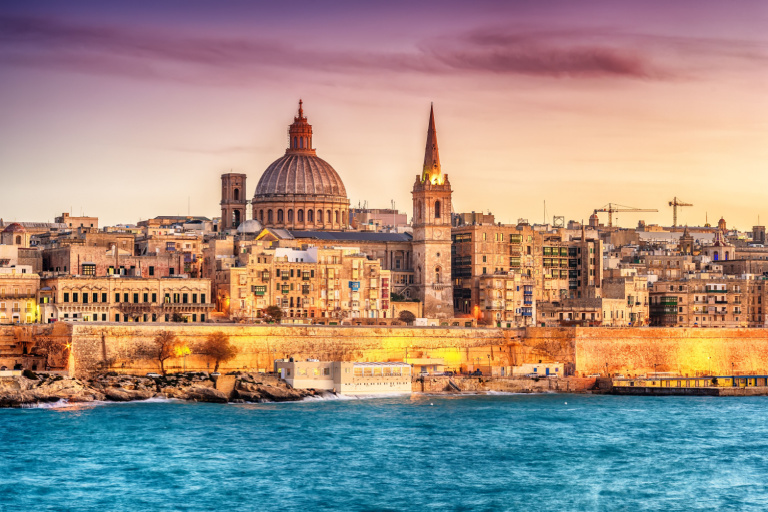
ZGPhotography/Shutterstock
When Is the Best Time to Visit Malta?
The best time to visit Malta is during the shoulder seasons of spring (April to June) and autumn (September to October). During these months, the weather is generally mild and sunny, with fewer crowds and lower prices than during the peak summer season.
Here are some of the benefits of visiting Malta during the shoulder seasons:
- Mild weather: Malta has a Mediterranean climate, with hot summers and mild winters. The shoulder seasons offer pleasant temperatures, making them ideal for sightseeing, exploring, and enjoying the outdoors.
- Smaller crowds: The shoulder seasons are less crowded than the peak summer season, so you’ll be able to enjoy Malta’s popular tourist attractions without having to deal with large crowds. This is especially important if you’re visiting popular destinations like the Blue Lagoon, the Co-Cathedral of St. John, and the Mdina walled city.
- Lower prices: Prices for flights, accommodation, and activities are generally lower during the shoulder seasons than during the peak summer season. This means you can save money on your trip without having to sacrifice quality.
Here are some specific examples of how you can enjoy the most of Malta during the shoulder seasons:
- Spring (April to June): The weather in spring is typically sunny and mild, with occasional showers. This is a great time to visit for hiking in Dingli Cliffs, visiting the Ggantija Temples, and swimming in the Blue Lagoon.
- Autumn (September to October): The weather in autumn is also typically sunny and mild, with occasional showers. This is a great time to visit for visiting the Mdina walled city, exploring the city of Valletta, and attending the Malta Jazz Festival.
While there are many great times to visit Malta, if you’re looking for the best weather and the most opportunities to enjoy the country’s outdoor activities, then we recommend visiting during the shoulder seasons of spring and autumn.
 Average Temperatures by Month
Average Temperatures by Month
|
Jan |
Feb |
Mar |
Apr |
May |
Jun |
Jul |
Aug |
Sep |
Oct |
Nov |
Dec |
| Fahrenheit |
54°
|
54°
|
57°
|
61°
|
68°
|
77°
|
82°
|
82°
|
77°
|
70°
|
61°
|
57°
|
| Celsius |
12°
|
12°
|
14°
|
16°
|
20°
|
25°
|
28°
|
28°
|
25°
|
21°
|
16°
|
14°
|
Climate in Malta
Summer Season in Malta
Maltese summers are hot and dry, with temperatures frequently exceeding 30°C (86°F). This season is characterized by abundant sunshine and minimal rainfall, making it ideal for beach holidays, water sports, and exploring the island's historical sites. The warm and dry conditions are typical of the Mediterranean climate, offering excellent opportunities for outdoor activities and enjoying the vibrant local culture.
Rainy Season in Malta
The rainy season in Malta brings the majority of the island's annual rainfall, particularly important for replenishing water sources and agriculture. The rain usually comes in short, heavy bursts and is interspersed with periods of sunshine. This season sees cooler temperatures compared to summer, providing a break from the high heat and a greener landscape.
Winter Season in Malta
Winters in Malta are mild and wet, with temperatures ranging between 10°C to 15°C (50°F to 59°F) in the lowlands and colder in the Troodos Mountains, where snowfall is common. This season is characterized by cooler and wetter weather, making it an ideal time for exploring the island's cultural heritage, enjoying the natural scenery, and participating in winter sports in the mountainous regions.
Our Recommendations
| Destination |
Jan |
Feb |
Mar |
Apr |
May |
Jun |
Jul |
Aug |
Sep |
Oct |
Nov |
Dec |
| Malta |
 |
 |
 |
 |
 |
 |
 |
 |
 |
 |
 |
 |






